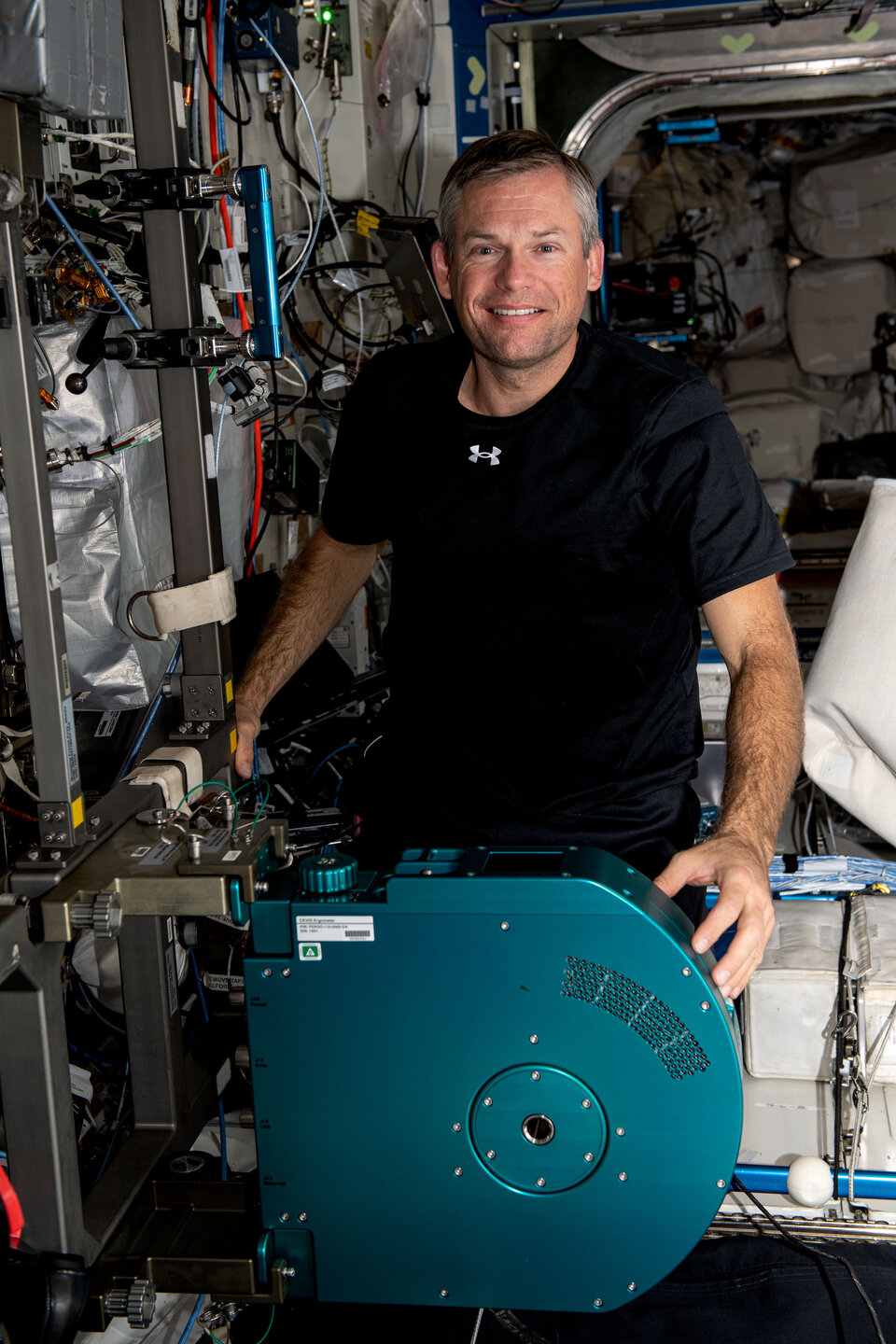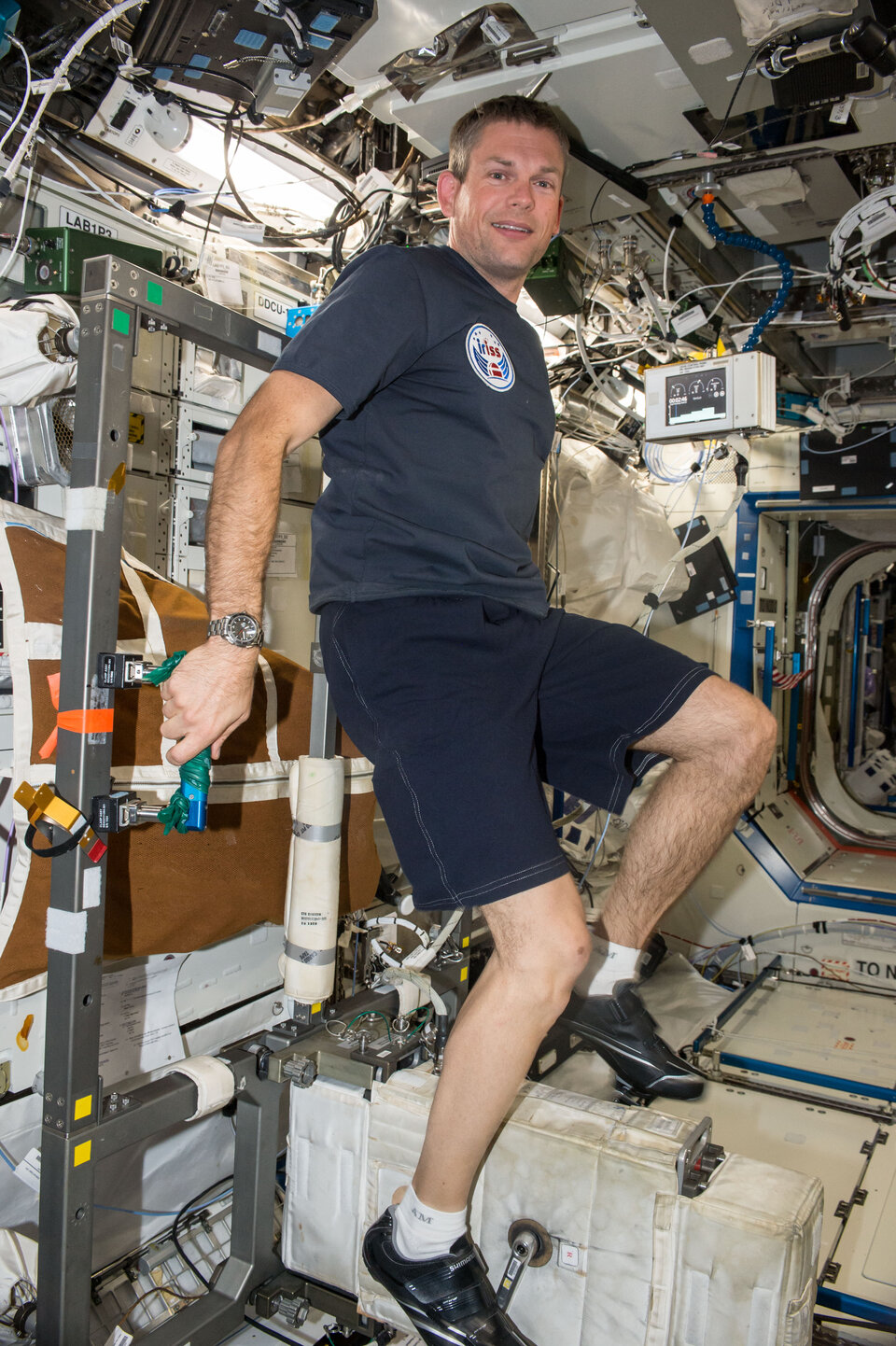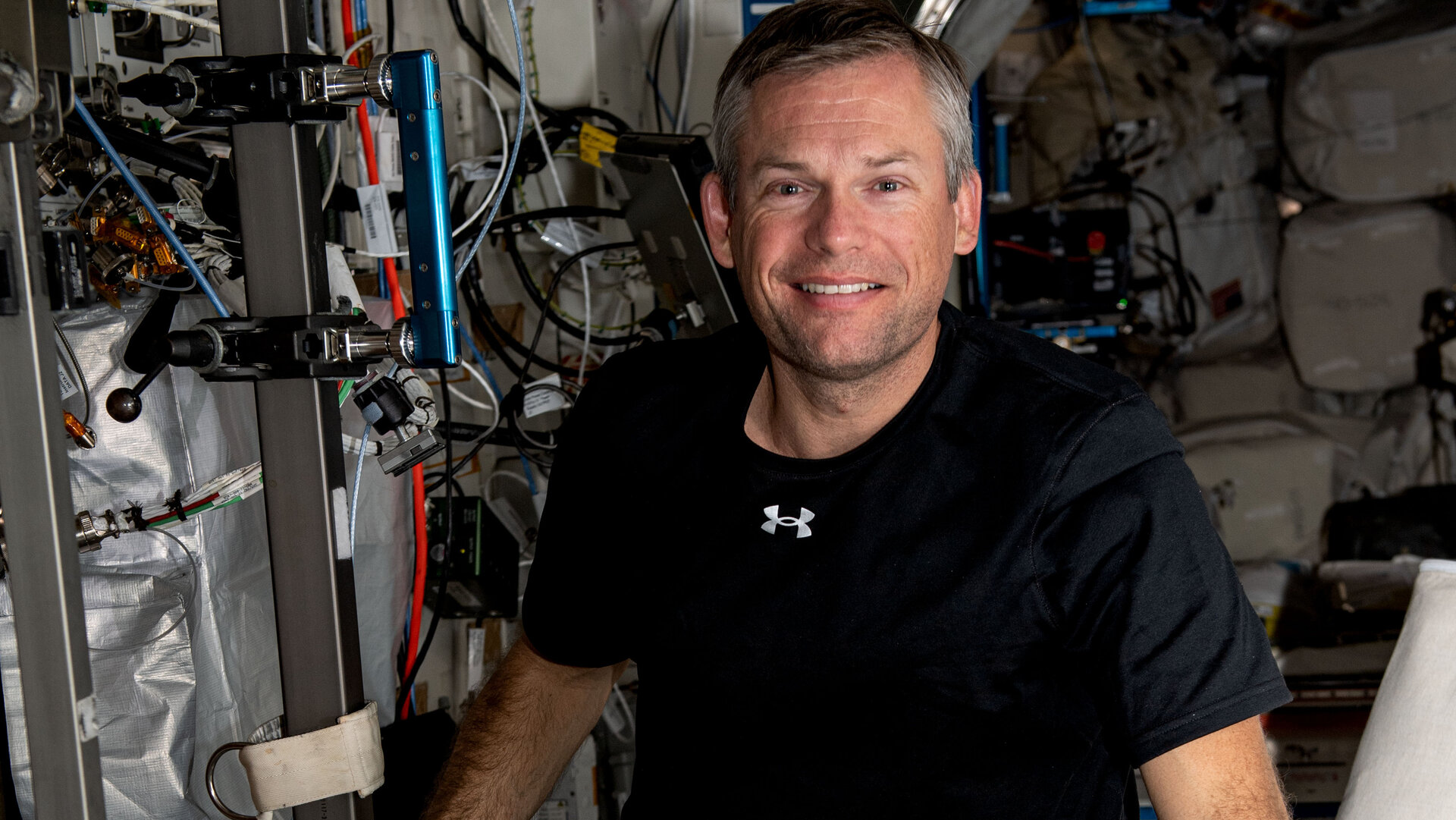Biking in space
Andreas Mogensen is taking part in a virtual reality experiment to make exercising on the Space Station bicycle more immersive and exciting.
Even though there is no wind to slow down astronauts when pedaling on the Space Station, keeping motivation to bike faster or longer while living for six months in a confined space can be difficult.
This is what the Virtual Reality for Exercise experiment sets out to explore. ESA astronaut Andreas Mogensen will wear a virtual reality headset while using the Space Station’s exercise bike.
Up and down the virtual roads

Andreas will watch a series of videos that will take him on different bike paths. The bike will adapt to the inclination in the video, adjusting to the difficulty Andreas would expect climbing or descending the slope he sees. Three videos have been recorded on Danish bike paths, with more to come as the developer, Danish Aerospace Company, invited Danes to record their favourite bike path and have a lucky winner have their bike path uploaded to Andreas’ virtual reality headset.
The experiment will give the developers a look into how immersive virtual reality could motivate an astronaut during their daily exercise routine on the Space Station. The astronauts need to exercise two hours of exercise each day to counteract the effects of microgravity on their muscles and bones. The videos provide a change in scenery from the interior of their home in space – not all exercise stations have a window.
New bike day

A new Space Station exercise bike called Flight Ergometer, or Fergo for short, arrived in August 2023 and will replace the current CEVIS bike, which has been in orbit since 2007. Fergo is lighter, smaller, and just looks faster. Besides looking more aerodynamic, the new bike can handle an astronaut putting out 500 watts during exercise – a substantial improvement compared to the CEVIS’s 350 watts.
Fergo comes with a computer with 21st-century features such as wireless connectivity, and compatibility with the virtual reality headset.
Getting virtual reality to work in space
Virtual reality headsets use gravity to know where the viewer is looking, relying on the fact that on Earth gravity always pulls down. With that point of reference, a headset can orient videos as the user’s head looks around in their virtual reality. On the Space Station, where the astronauts live in weightlessness, a normal virtual reality headset loses its orientation. To overcome this, the virtual reality headset in space will use a controller on the Fergo bike as a reference point to allow for a smooth, and steady, virtual reality experience.
You can follow Andreas’s mission on the Huginn page and his social media.


